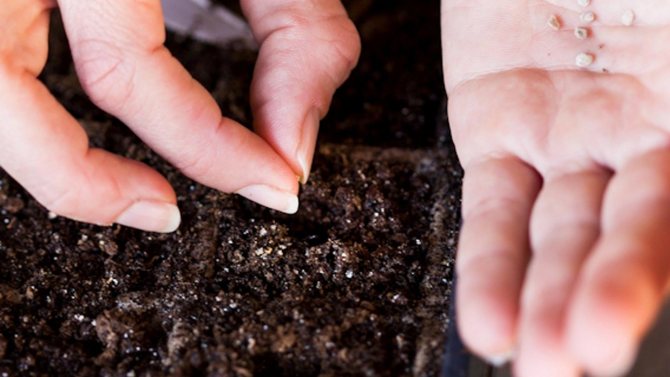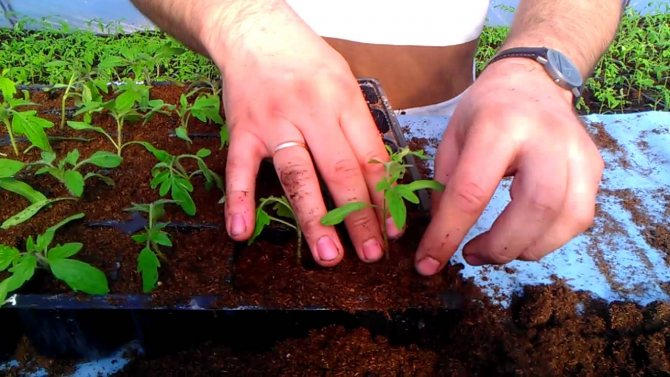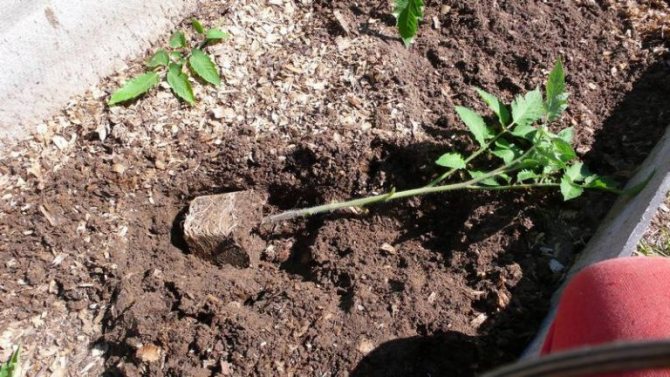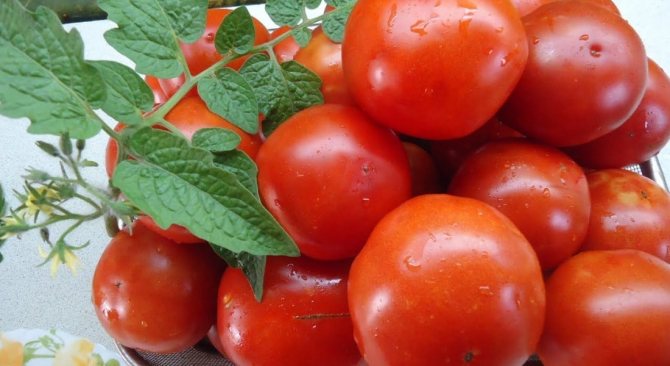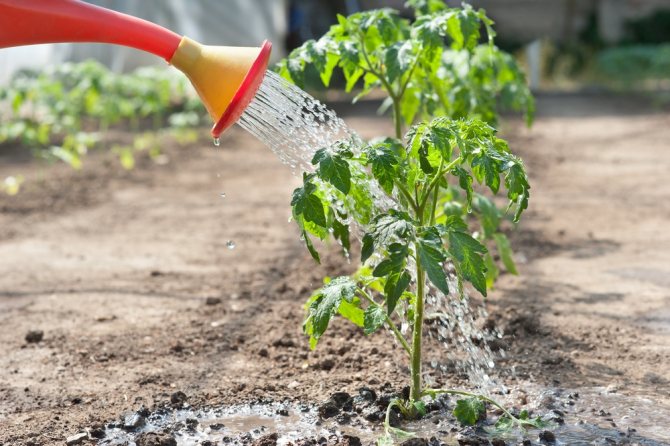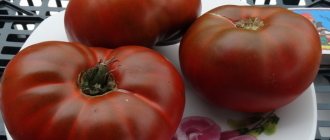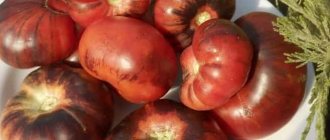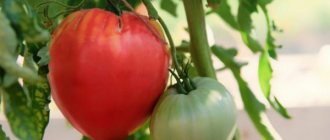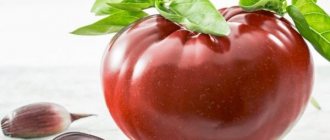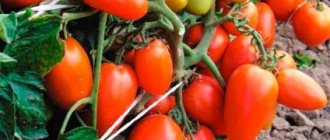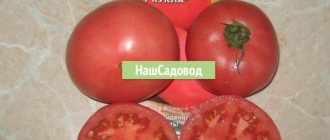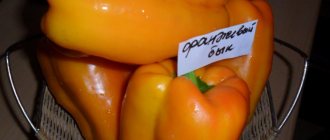Among the variety of tomatoes, the ultra-early variety Sanka is becoming more and more popular. Tomatoes are intended for the Central Black Earth Region, they have been registered since 2003. She worked on the breeding of the variety E. N. Korbinskaya, and it is often distributed under the name of tomato Aelita Sanka (according to the name of the company that produces its seeds). Now the hearts of many gardeners are given to Sanka tomatoes because of their excellent characteristics. Small, beautifully rounded fleshy fruits of rich red color are a real boon for the hostess. They look amazingly appetizing in blanks.

Those who like to experiment also grow Sanka golden tomatoes. These fruits differ from the original variety only in bright yellow color - a kind of cheerful suns among the garden greenery. The other parameters of the variety are identical. Due to very fast ripening (65-85 days), plants of the Sanka variety, both red and gold, can sometimes even "escape" from diseases and therefore have time to provide a full-fledged harvest.
Origin of the variety


Photo of Sanka fruits This tomato variety was bred in Russia in 2003. This kind of tomato grows best and bears fruit in the central black earth region.
In shops and markets you can find not only seeds with the name "Sanka", but also "Sanka gold", in general, these varieties are not much different from each other. "Sanka gold" is a subspecies of the classic Sanka variety.
The full name of this variety is "Tomato Aelita Sanka". But it is practically not used in writing on labels.
Tomatoes Sanka on video
If you grew early ripening Sanka tomatoes, please write in the comments whether you liked them or not. What was the yield and taste of the fruit in your climatic conditions? Will you grow them again? How do you rate the disease resistance of this tomato variety? Briefly describe the advantages and disadvantages of this tomato in your opinion. If possible, attach a photo of the entire bush or individual fruits grown by you to the comment. Thank you!
Your reviews about Sanka tomato and additions to the description will help many gardeners evaluate this variety more objectively and decide whether to plant it or not.
Buy tomato seeds Cornabel
Russia Gardens
Hit of the season 2020! A novelty that has shown a stunning result! High yield! Great fruit taste!
Description, characteristics of the Sanka variety with a photo
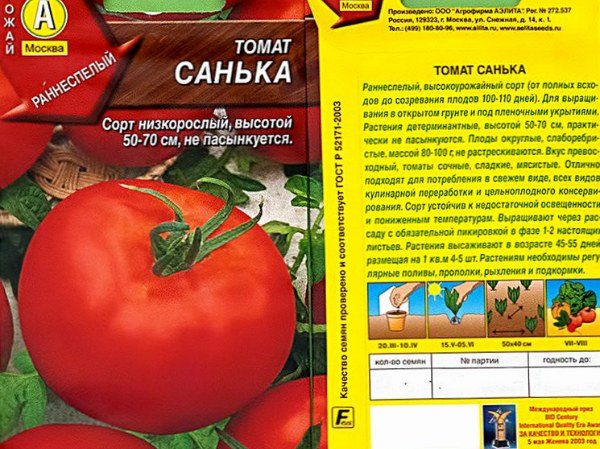

The main characteristics of the variety are:
- The fruits are small, if grown in a greenhouse, then their weight can reach 140-150 grams, in open areas you can grow tomatoes up to 85 grams.
- Short stature. The height of its stems does not exceed 60 cm, hence the main plus in caring for the plant, it does not need to be tied up.
- Treat early ripening varieties. It takes about 80-85 days from the moment of germination to full ripening of the fruits. But it must be borne in mind that the ripening rate still depends on the region of planting. In warm black earth regions, ripening can be even shorter, about 75 days.
- Cold resistant.And also he does not need a lot of sunlight, which means that when planting him, you do not need to look for or clear a place. It can be grown both in greenhouses and in open garden plots.
- High-yielding. With proper care, more than 10 kilograms of tomatoes can be harvested from one square meter.
- Ripe fruits are red. And they have a slightly ribbed surface.
Appearance and characteristics
Fans of early ripening vegetables annually grow Sanka tomato. The characteristic and description of the variety includes many details. On shoots 60–70 cm high, large, fleshy fruits of a bright red color grow, each of which weighs about 80 g. Sometimes tomatoes weighing up to 100 g or even 150 g grow. All tomatoes have a thin skin and dense pulp, so they can be made of preparations for the winter.
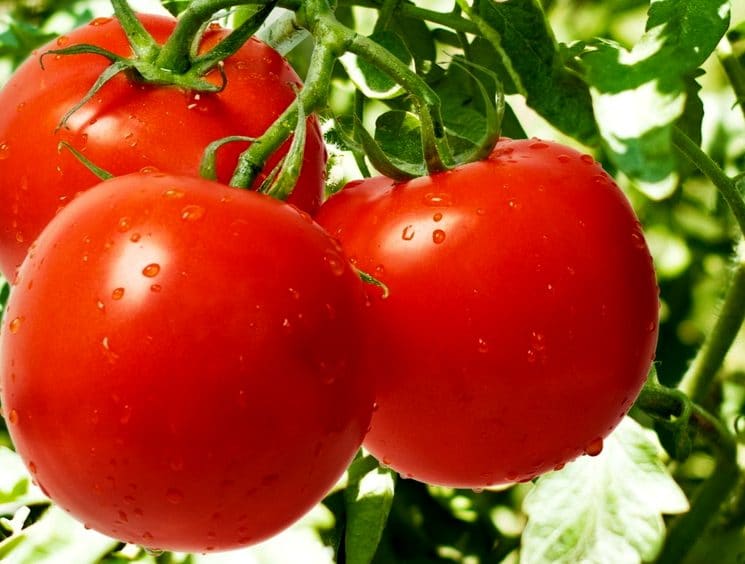

Tomato variety Sanka
It is interesting! Breeders have bred another variety - Sanka Zolotoy. It grows large yellow tomatoes, rich in vitamin A (carotene).
Sanka is an early ripe variety: the crop can be harvested in early July. Due to this property, it finishes bearing fruit before the "epidemic" of late blight among tomatoes. Nevertheless, Sanka also needs to be treated with drugs against this disease.


Low bushes need to be tied to a post
Advantages and disadvantages of the variety
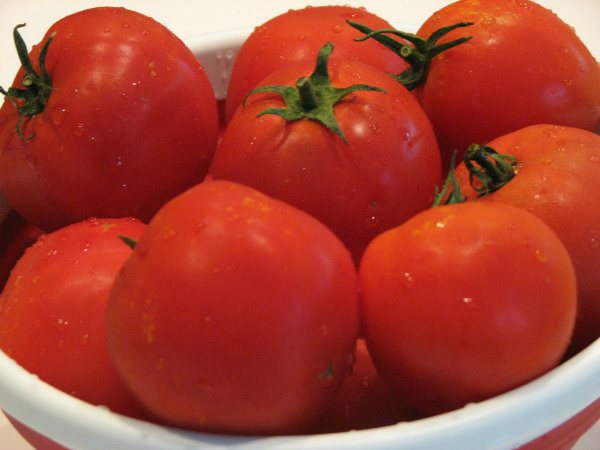

This tomato variety immediately became popular, and today it has won many fans.
- It is resistant to almost all harmful diseases.
- It can bear fruit all summer long, and due to its resistance to low temperatures, it can continue to delight with fruits until the very frost.
- The fruits are very beautiful and delicious.
- Does not require pinning.
- Early ripening of fruits.
- Bushes grow without support, no garter needed.
Having bought seeds once and growing tomatoes, you do not have to worry about purchasing seeds, the variety is not hybrid, so you can prepare the material for planting yourself.
Usually, manufacturers are reluctant to point out flaws and place only praise from gardeners and the merits of the variety on the label. To understand what flaws it has, I had to study the reviews on the forums in detail.
Indeed, many gardeners are happy with these varieties. But there are also several gardeners whose experience of growing this tomato has become negative.
- Some summer residents claim that the bush bore fruit for a very long time, only the fruits were not very large. Even less than stated on the seed label. In this case, the tomato, most likely, did not like the soil in which it was planted or the improper care of the plants was present.
- Some gardeners claim that Sanka still suffered from late blight. Although the description of the variety indicates that "Sanka" has immunity to all diseases.
As you can see, everything is individual, and in order to understand whether you really like this variety, you need to plant several bushes for a test and harvest. And then draw conclusions.
FAQ
How do you choose the “right” seeds?
Seeds are purchased in specialized stores from trusted manufacturers. This will ensure that the harvested crop will match the variety.
Sanka variety or hybrid?
This is a varietal tomato and this will mean that the harvested seeds can continue the genus and are suitable for further cultivation.
Why do the leaf plates of the bushes in the greenhouse look almost upward?
Tomato bushes are likely to suffocate in a greenhouse without access to air and water. In this case, it is required to increase ventilation and urgently water the tomato bushes with warm water so as not to cause stress in the bushes.
Why on the first ovary fruits grow corresponding to the variety, and then they become smaller?
Most likely, there is not enough food in the soil and the tomato bushes need to be fed with potassium-phosphorus fertilizer.At the same time, the greenhouse must be opened at night for fresh air if the tomatoes are grown in the greenhouse.
Why are the seedlings pulled out, even if they grow on the southern windowsill?
Most likely, the gardener, wanting to get stronger bushes, planted the seedlings too early when planting in the ground and they outgrow or he often used nitrogen fertilizers, which led the seedlings to excessive growth.
What to do with the planted seedlings if they are threatened by recurrent frosts?
This will require iron arcs, which are placed along a row of planted tomatoes and pulled over them:
- Greenhouse film;
- Lutrasil;
- Any other temporary insulation.
Foliar top dressing what is it?
This is when fertilizers are diluted in a low dose and sprayed over tomato leaf plates. This type of feeding guarantees faster penetration of minerals into the plant and is considered more effective.
Growing and care
How to prepare seeds yourself
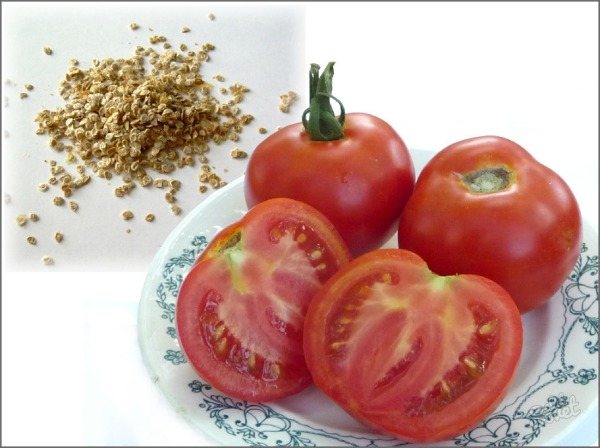

If this is your first time planting this variety, then this information will be useful to you. The seeds can be purchased at specialized stores or prepared by yourself.
For self-harvesting of seeds, you must:
- Choose large fruits.
- Put the tomatoes in a dry warm place for further ripening for one - one and a half weeks.
- After the tomatoes are very soft, cut them in half and squeeze the seeds into a jar. In this form, the seeds must be left for another couple of days. For the best effect, add a little water, just stir the seeds with the water constantly.
- After 2-3 days, gas bubbles and mold will appear on the surface of the "infusion", remove it carefully with a spoon. Add clean water. Stir again and drain.
- Seeds that are suitable for planting will remain at the bottom.
- Repeat this flushing several times.
- Remove remaining seeds, place on cheesecloth or cotton rag and blot.
- Leave until the seeds are completely dry. Divide them into sachets and store in a dry, dark place.
When should you sow seeds?


Sanka tomato seeds, as noted above, can be planted in two ways:
- in a greenhouse;
- in the open field.
If you prefer planting outdoors, then you should not start sowing seeds earlier than April.
If your tomatoes will be in a greenhouse, then planting can begin in mid-March.
To disinfect seeds, before planting, they must be soaked in a solution of potassium permanganate for about 15 minutes, then rinsed several times under running water. If you purchased the seed in the store, then you can start sowing right away.
Seeds must be planted in low boxes. Put each seed into the soil at a distance of at least a centimeter from each other.
You should not bury the seeds deeply enough 2 cm.
You can prepare the soil for planting yourself or buy it in a store. There is a lot of information on the Internet on how to properly prepare the soil for planting tomatoes and how to fertilize it for a more intense harvest.
Seedling care
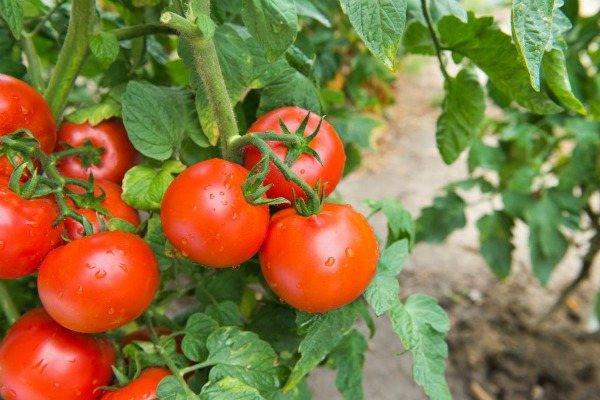

After the shoots have appeared, you need to pick, that is, transplant the seedlings into separate cups. Before diving, the soil must also be fertilized with any mineral fertilizer. We recommend Senior Tomato.
After the seedlings are planted, do not let the soil dry out, water as needed.
But you should not be zealous either, excess moisture can be detrimental to the root system. On average, seedlings are watered 1-2 times a week.
For good survival of seedlings, some sensors monitor the temperature in the room. Immediately after the dive and throughout the week. The temperature should not be lower than 26 degrees. After this time, tomato seedlings will feel great at 20 degrees.
At the beginning of May, you can already move the seedlings into open ground. Before planting, tomato seedlings are hardened by placing them in fresh air for a while. They start with a couple of hours. Gradually increasing the time. The last day before transplanting, the seedlings should be spent on the street.
Pest and disease control
The tomato variety is resistant to ailments and pests, but in adverse conditions it can suffer:
- from late blight;
- from root rot;
- from aphids;
- from the bear and the Colorado potato beetle.
The Sanka variety rarely suffers from diseases and insects. To protect against diseases and insects, it is necessary to spray the tomatoes with a solution of laundry soap or Bordeaux liquid annually. Popular insecticides - Aktara, Alatar and others - help to get rid of insects.
Advice! Tomato Sanka is not recommended to be planted in the place where nightshade crops used to grow.
Reviews of gardeners who planted the Sanka variety


Ivan.
I myself have been planting this variety for a very long time. I like that it is frost-resistant and unpretentious. No need to bother with a garter. The fruits themselves have a thin skin, sweetish flesh. Tomatoes of this sort grow earlier than others in my garden, and we try them after the "wooden" store-bought tomatoes, the difference is, as they say on the face.
Elena.
This is the best tomato for me. With him, I am always sure that my harvest is blowing. Tomatoes of this variety are suitable for preservation and for preparing salads and other dishes. Last year, I harvested the last crop of this tomato in mid-September and there were many more green tomatoes on the branches. For myself, I brought out the ideal landing model. I plant the seedlings first in the greenhouse, and then in the open ground. Neighbors plant immediately in the ground under the agrofilm. I am still afraid of this method. The taste of tomato is also excellent, moderately sour, moderately sweet. In general, the product is what you need.
VIKI271
My opinion about tomato will be mixed. I will say this: a tomato with special features. Comfortable fit. Unpretentious and frost-resistant. Here is just one drawback: I harvest the fruits of the size stated on the label only in the first harvest. Further, the tomatoes become smaller. Although there are no complaints about the taste. I only use tomatoes of this variety for preservation. It fits perfectly here.
Svetlana
I liked the tomato, it is unpretentious and ripens quickly. I have never been ill, but my sister got phyto flora, in general, she was disappointed in the variety.
Pros and cons
According to the responses of gardeners, the Sanka tomato is endowed with a large number of positive qualities. The advantages of the variety include:
- early maturity;
- increased productivity;
- long fruiting;
- taste qualities;
- good transportation;
- frost resistance;
- collection of seed.
The advantages of the variety also include good immunity to various diseases and insect pests.
As practice has shown, Sanka's tomato has no drawbacks. However, in order to get a decent harvest, you will need to follow certain rules of agricultural technology and care.
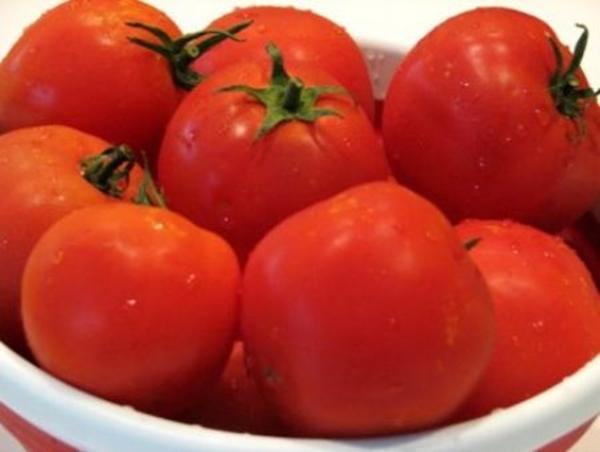

Fruit characteristics
- Tomatoes are small, round, smooth, beautiful. They have a bright red color, they sing at the same time, which facilitates the collection procedure.
- The fruits weigh mainly 100-150 g.
- The skin is firm. Tomatoes can be picked unripe. They ripen perfectly outside the bush without losing their appearance and taste.
- The pulp is firm, not watery, unlike other early varieties, aromatic and pleasant to the taste.
- The dry matter content is 4-5%.
Important! The seeds can be used to breed the variety.
Features of caring for tomatoes
To maintain the seedlings in a healthy state and obtain a high yield rate after transplanting, it is necessary to competently organize agrotechnical work.
Caring for the Sanka variety includes the following steps.
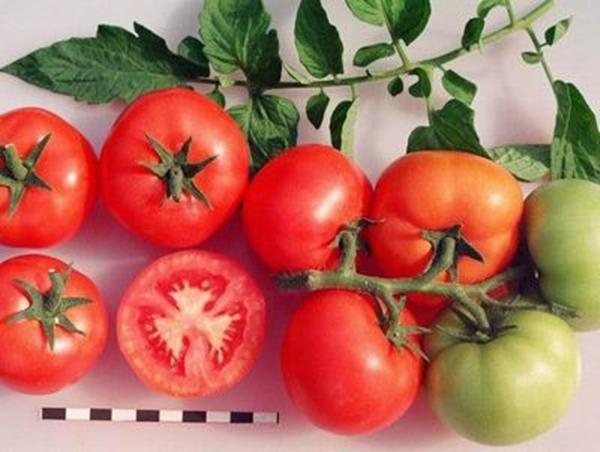

Loosening
It is desirable that the soil under the plants is always loose.Loosening is carried out after each watering or once every two weeks. This manipulation saturates the earth with oxygen, which has a beneficial effect on the growth of tomatoes.
Watering
Irrigation is carried out regularly with warm water. At the same time, it is not necessary to allow waterlogging of the soil, otherwise the root system of plants will suffer. The irrigation rate is considered to be 7-8 liters per 1 square meter.
Feeding
The best fertilizer for the Sasha variety is chicken manure or mullein. It is necessary to feed the plant during the flowering period. The recommended rate is 0.5 liters of organic fertilizer per 10 liters of water.
Is she going to sleep or not?
The cultivation of the Sanka variety is an integral part of agrotechnical work. This operation begins to be carried out even before transplanting the seedlings to the place of their growth. Without removing the stepsons, the bush begins to grow and thicken quickly. A large number of fruits are formed on the brushes. As a result, they are crushed and lose their commercial qualities.
Bush formation
Usually a Sanka tomato is formed into one or two trunks. In the first case, during the growth of the plant, before the appearance of inflorescences, all lateral shoots are pinned. In the second version, an additional stem is formed from the stepson, which emerges from the leaf axil.




